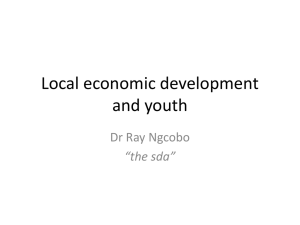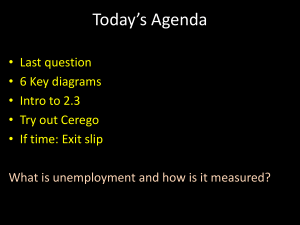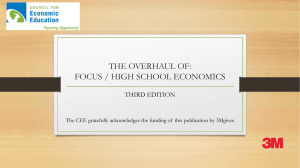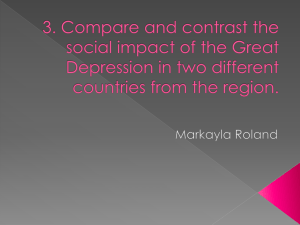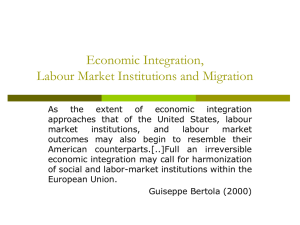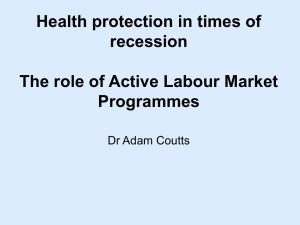Daughters and Leftwing Voting
advertisement
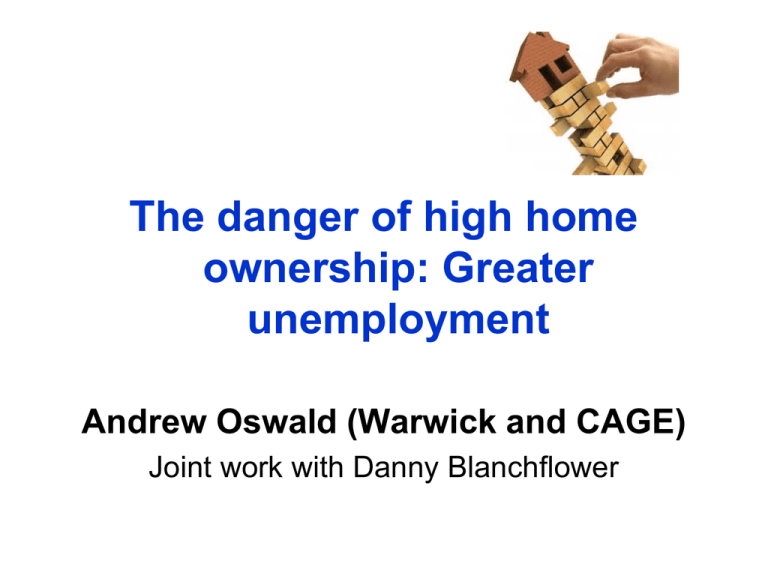
The danger of high home ownership: Greater unemployment Andrew Oswald (Warwick and CAGE) Joint work with Danny Blanchflower The background since WW2 OECD unemployment was 3% and is now 10%+ OECD unemployment was 3% and is now 10%+ Standard explanations: • trade unions became too powerful • unemployment benefits too generous • labour markets too inflexible. We want to consider something different We want to consider something different – that economists and policymakers need to focus on the way the housing market works. Often-forgotten facts Often-forgotten facts • In 1950, most British citizens were private renters. Often-forgotten facts • In 1950, most British citizens were private renters. • Today, nearly 70% of Swiss people are private renters. Friedman (1968) Friedman (1968) • “The ‘natural rate of unemployment’ ... is the level that would be ground out by the Walrasian ... equations, provided there is embedded in them the actual ... characteristics of the labour and commodity markets, ... market imperfections, the costs of gathering information, the costs of mobility, and so on.” Let’s start Let’s start ... with some simple correlations Home-ownership rates plotted against unemployment rates in 27 EU & OECD countries 30 Unemployment rtae (%) 25 y = 0.1675x - 2.3113 R² = 0.1619 20 15 10 5 0 40 50 60 70 Home Ownership Rate (%) 80 90 14 100 Euro area alone Over half a century in the US 50 year changes (1950-2000) in home ownership rates and 60 year changes in unemployment rates (1950-2010) Alabama, Georgia, Mississippi, South Carolina, West Virginia average rise in home ownership rates =+23% Chane in unemployment rates (percentage points) 7 6 5 4 California, North Dakota, Oregon, Washington, Wisconsin average rise in home owenership rates= +1% 3 2 1 0 Lowest five states Highest five states Changes in home ownership rates Long time-differences in US state data Long time-differences for Swiss cantons Is there any quasi-experimental evidence? Is there any quasi-experimental evidence? • Yes. Recently released in Finland. “Home-ownership and the Labour Market: Evidence from Rental Housing Market Deregulation” Jani-Petri Laamanen In our own work In our own work • Movements in the unemployment rate in state j are explained in large part by movements in the home-ownership rate in state j some years earlier. • The ‘elasticity’ is huge. It exceeds 1. Is this pattern robust across different time periods and different parts of the USA? Is this pattern robust across different time periods and different parts of the USA? Yes, if we split the data at year 2001. Is this pattern robust across different time periods and different parts of the USA? Yes, if we split the data at year 2001. Yes, if we split the data into different areas of the USA. What might be going on? Home ownership leads to: • Lower geographical mobility • Longer commuting times • Fewer new businesses Why? It is not that being a home owner is ‘making’ me unemployed. Why? Why? It is hard to see how this could be in some sense Keynesian or all about ‘aggregate demand’. Idea 1 • High home-ownership encourages greater commuting, and that increases congestion costs for other workers and their employers. Idea 2 • High home-ownership reduces mobility, and that has deleterious knowledge-flow ‘externalities’ on everyone’s productivity. Idea 3 • High home-ownership tends to block new business development (zoning and NIMBY pressures). The main finding There is a profound link between high home ownership and later high unemployment.

